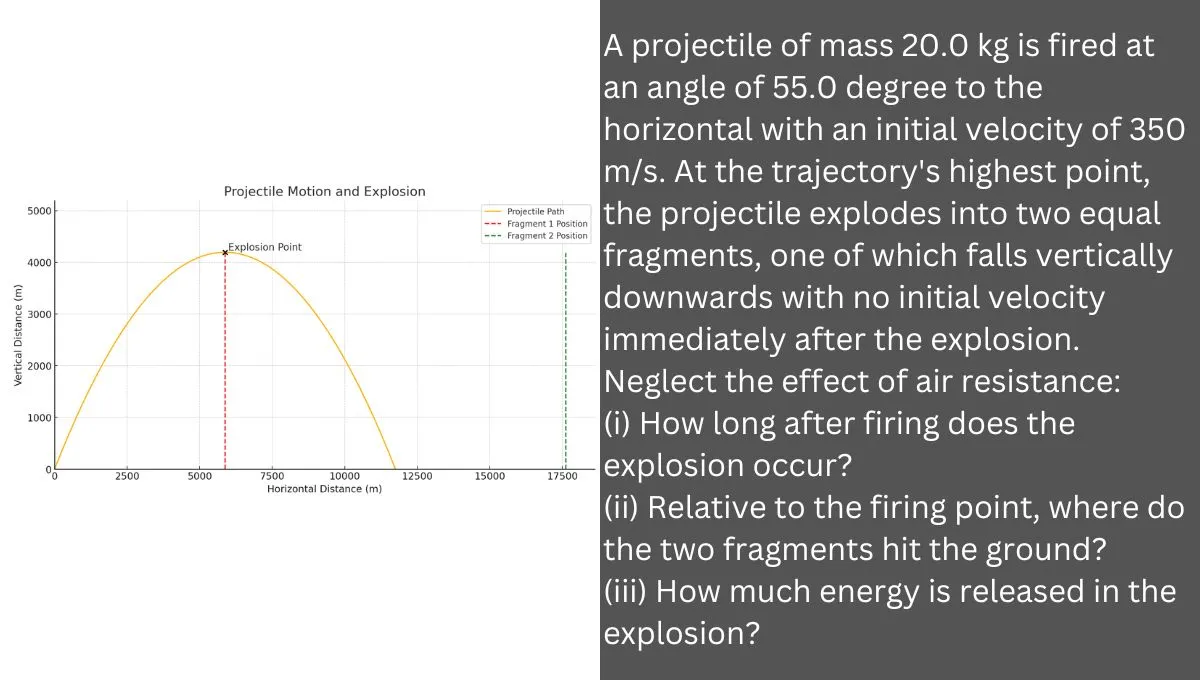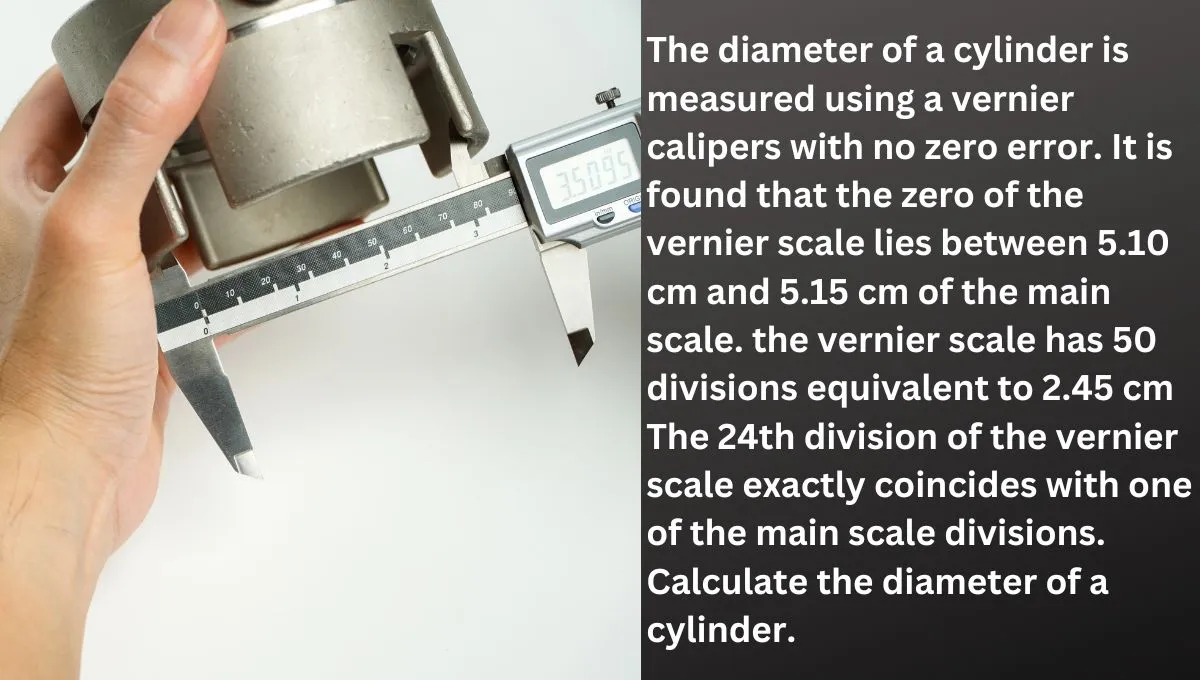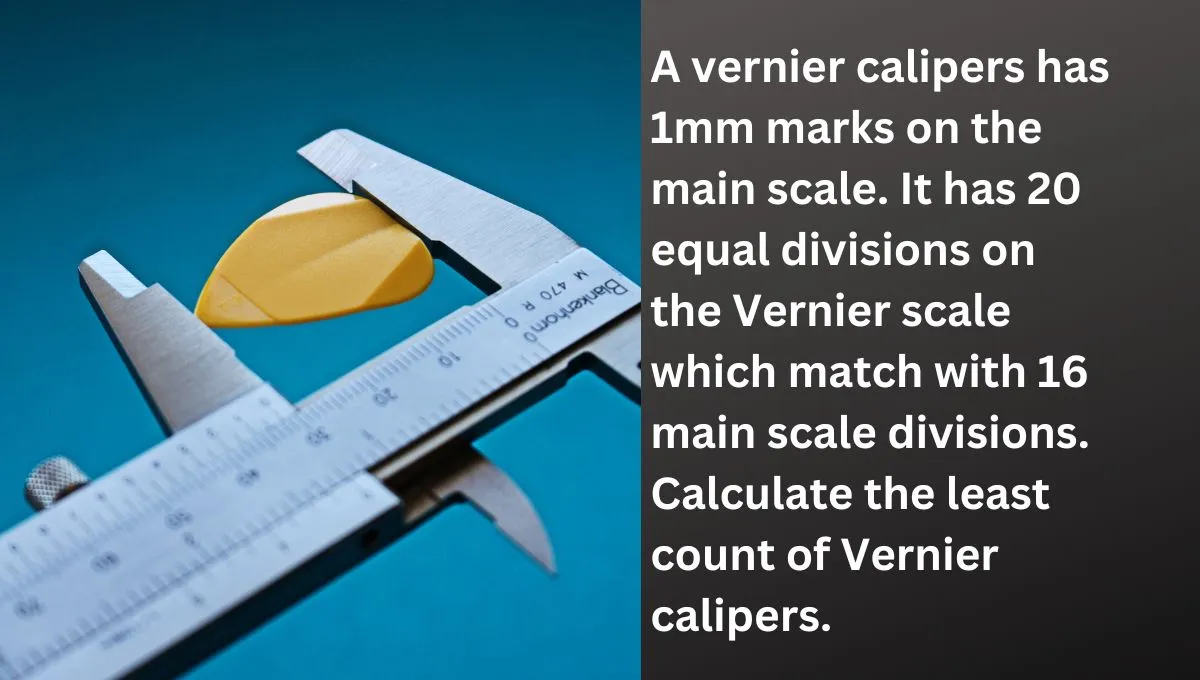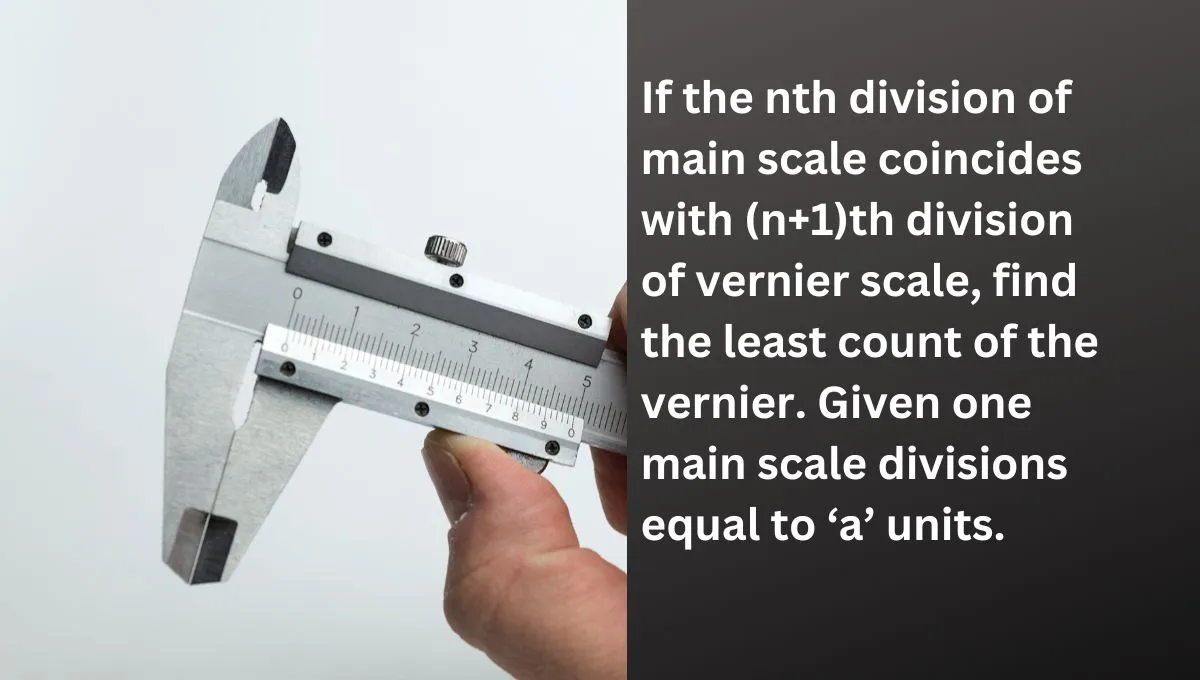A projectile of mass 20.0 kg is fired at an angle of 55.0° to the horizontal with an initial velocity of 350 m/s. At the highest point of the trajectory, the projectile explodes into two equal fragments, one of which falls vertically downwards with no initial velocity immediately after the explosion. Neglect the effect of air resistance.
| Property | Value |
| Projectile mass | 20.0 kg |
| Firing angle | 55.0° |
| Time to explode | 29.25 s |
| Explosion height | Not specified in the article |
| Fragment 1 velocity (vertical) | 0 m/s |
| Fragment 1 velocity (horizontal) | 0 m/s |
| Fragment 1 landing distance | 5873 meters |
| Fragment 2 velocity (vertical) | 0 m/s |
| Fragment 2 velocity (horizontal) | 401.5 m/s |
| Fragment 2 landing distance | 17619 meters |
| Explosion energy |
Explanation and Solution:
(i) How long after firing does the explosion occur?
The time to reach the highest point of the trajectory is given by:
![]()
where
Substituting the values:
![]()
![]()
![]()
![]()
The explosion occurs 29.25 seconds after firing.
Final Answer: 29.25 seconds
(ii) Relative to the firing point, where do the two fragments hit the ground?
At the highest point of the trajectory, the velocity of the particle is entirely horizontal, being equal to ![]() . The momentum of this particle at the highest point is
. The momentum of this particle at the highest point is ![]() , when
, when ![]() is its mass. After the explosion, one fragment starts falling vertically and so does not carry any momentum initially. It would fall at half of the range, that is:
is its mass. After the explosion, one fragment starts falling vertically and so does not carry any momentum initially. It would fall at half of the range, that is:
![]()
![]()
![]()
The second part of mass ![]() proceeds horizontally from the highest point with initial momentum
proceeds horizontally from the highest point with initial momentum ![]() in order to conserve momentum. If its velocity is
in order to conserve momentum. If its velocity is ![]() then:
then:
![]()
![]()
![]()
Then its range will be:
![Rendered by QuickLaTeX.com \[ R' = v \sqrt{\frac{2h}{g}} \]](https://physicsqanda.com/wp-content/ql-cache/quicklatex.com-599474416170cf1a9df82d0597d4235a_l3.png)
But the maximum height:
![]()
Using this height in the range formula:
![Rendered by QuickLaTeX.com \[ R' = v \sqrt{\frac{2h}{g}} \]](https://physicsqanda.com/wp-content/ql-cache/quicklatex.com-599474416170cf1a9df82d0597d4235a_l3.png)
![Rendered by QuickLaTeX.com \[ R' = v \sqrt{\frac{2\times \frac{u^2 \sin^2 \alpha}{2g}}{g}} \]](https://physicsqanda.com/wp-content/ql-cache/quicklatex.com-9d20608ba7da9002a3c6d0d09e2ce178_l3.png)
![]()
![]()
![]()
The distance from the firing point at which the second fragment hits the ground is:
![]()
Final Answers:
- First fragment: 5873 m from the firing point
- Second fragment: 17619 m from the firing point
(iii) How much energy is released in the explosion?
Energy released is the difference between the kinetic energy of the fragments and the kinetic energy of the projectile at the time of the explosion:
![]()
Substituting the values:
![]()
![]()
Final Answer: ![]() J
J




